John Joseph Mearsheimer (;[3] born December 14, 1947) is an American political scientist and international relations scholar, who belongs to the realist school of thought. He is the R. Wendell Harrison Distinguished Service Professor at the University of Chicago.
Mearsheimer proposed the theory of offensive realism which describes the interaction between great powers as dominated by a rational desire to achieve hegemony in a world of insecurity and uncertainty regarding other states’ intentions. He was a vocal opponent of the Iraq War in 2003 and was almost alone in opposing Ukraine’s decision to give up its nuclear weapons in 1994 and predicted that, without a deterrent, they would face Russian aggression.
His most controversial views concern alleged influence by interest groups over US government actions in the Middle East which he wrote about in The Israel Lobby and U.S. Foreign Policy. In accordance with his theory, Mearsheimer considers that China’s growing power will likely bring it into conflict with the United States. His work is frequently taught to and read by twenty-first century students of political science and international relations.
Early years
Mearsheimer was born in December 1947 in Brooklyn, New York. He was raised in New York City until the age of eight, when his parents moved his family to Croton-on-Hudson, New York, a suburb located in Westchester County.[4] When he was 17, Mearsheimer enlisted in the U.S. Army. After one year as an enlisted member, he chose to attend the United States Military Academy at West Point. He attended West Point from 1966 to 1970. After graduation, he served for five years as an officer in the U.S. Air Force.[5][6]
In 1974, while in the Air Force, Mearsheimer earned a Masters Degree in International Relations from the University of Southern California. He subsequently entered Cornell University and in 1980 earned a Ph.D. in government, specifically in international relations. From 1978 to 1979, he was a research fellow at the Brookings Institution in Washington, D.C.; from 1980 to 1982, he was a post-doctoral fellow at Harvard University‘s Center for International Affairs. During the 1998–1999 academic year, he was the Whitney H. Shepardson Fellow at the Council on Foreign Relations in New York.[4]
Career
Since 1982, Mearsheimer has been a member of the faculty of the Department of Political Science Faculty at the University of Chicago.[7] He became an associate professor in 1984, a full professor in 1987, and was appointed the R. Wendell Harrison Distinguished Service Professor in 1996. From 1989 to 1992, he served as chairman of the department. He also holds a position as a faculty member in the Committee on International Relations graduate program, and is the co-director of the Program on International Security Policy.[8]
Mearsheimer’s books include Conventional Deterrence (1983) which won the Edgar S. Furniss Jr. Book Award, Nuclear Deterrence: Ethics and Strategy (co-editor, 1985); Liddell Hart and the Weight of History (1988); The Tragedy of Great Power Politics (2001), which won the Lepgold Book Prize; The Israel Lobby and U.S. Foreign Policy (2007); and Why Leaders Lie: The Truth About Lying in International Politics (2011). His articles have appeared in academic journals like International Security and popular magazines like the London Review of Books. He has written op-ed pieces for The New York Times, the Los Angeles Times, and the Chicago Tribune.[8]
Mearsheimer has won several teaching awards. He received the Clark Award for Distinguished Teaching when he was a graduate student at Cornell in 1977, and he won the Quantrell Award for Excellence in Undergraduate Teaching at the University of Chicago in 1985. In addition, he was selected as a Phi Beta Kappa Visiting Scholar for the 1993–1994 academic year. In that capacity, he gave a series of talks at eight colleges and universities. In 2003, he was elected to the American Academy of Arts and Sciences.[8]
Work
Conventional deterrence
Mearsheimer’s first book Conventional Deterrence (1983) addresses the question of how decisions to start a war depend on the projected outcome of military conflict. In other words, how do decision makers’ beliefs about the outcome of war affect the success or failure of deterrence? Mearsheimer’s basic argument is that deterrence is likely to work when the potential attacker believes that a successful attack will be unlikely and costly. If the potential attacker, however, has reason to believe the attack will likely succeed and entail low costs, then deterrence is likely to break down. This is now widely accepted to be the way the principle of deterrence works. Specifically, Mearsheimer argues that the success of deterrence is determined by the strategy available to the potential attacker. He lays out three strategies. First, a war-of-attrition strategy, which entails a high level of uncertainty about the outcome of war and high costs for the attacker. Second, a limited-aims strategy, which entails fewer risks and lower costs. And, third, a blitzkrieg strategy, which provides a way to defeat the enemy rapidly and decisively, with relatively low costs. For Mearsheimer, failures in the modern battlefield are due mostly to the potential attacker’s belief that it can successfully implement a blitzkrieg strategy in which tanks and other mechanized forces are employed swiftly to effect a deep penetration and disrupt the enemy’s rear.[9] The other two strategies are unlikely to lead to deterrence failures because they would entail a low probability of success accompanied by high costs (war of attrition) or limited gains and the possibility of the conflict turning into a war of attrition (limited aims). If the attacker has a coherent blitzkrieg strategy available, however, an attack is likely to ensue, as its potential benefits outweigh the costs and risks of starting a war.[10]
Besides analyzing cases from World War II and the Arab–Israeli conflict, Mearsheimer extrapolates implications from his theory for the prospects of conventional deterrence in Central Europe during the late Cold War. Here, he argues that a Soviet attack is unlikely because the Soviet military would be unable to successfully implement a blitzkrieg strategy. The balance of forces, the difficulty of advancing rapidly with mechanized forces through Central Europe, and the formidable NATO forces opposing such a Soviet attack made it unlikely, in Mearsheimer’s view, that the Soviets would start a conventional war in Europe.[11]
Nuclear proliferation and nuclear deterrence
In 1990 Mearsheimer published an essay[12] where he predicted that Europe would revert to a multipolar environment similar to that in the first half of the twentieth century if American and Soviet forces left following the end of the Cold War. In another article that year, in The Atlantic, he predicted that this multipolar environment would increase nuclear proliferation in Europe, especially in Germany.[13]
In this essay and in the 1993 Foreign Affairs article “The case for a Ukrainian nuclear deterrent”,[14] he argued that to reduce the dangers of war, the United States should encourage Germany and Ukraine to develop a nuclear arsenal, while working to prevent the rise of hyper-nationalism. Mearsheimer presented several possible scenarios for a post-Cold-War Europe from which American and Russian forces had departed. He believed that a Europe with nuclear proliferation was most likely to remain at peace, because without a nuclear deterrent Germany would be likely to once more try to conquer the continent (See pages 32–33).[12] Mearsheimer argued that it would be strategically unwise for Ukraine to surrender its nuclear arsenal (remnants of the Soviet stockpile). However, in 1994 Ukraine consented to get rid of its entire former Soviet nuclear stockpile, a process that was complete by 1996. When challenged on the former assertion at a lecture given to the International Politics department at the University of Wales in Aberystwyth, he maintained that in spite of European integration and expansion, he still believed that his predictions would come true if the United States military left Europe.[15]
Also, in op-ed pieces written in 1998 and 2000 for The New York Times, Mearsheimer supported India’s decision to acquire nuclear weapons. In support of this position, he argued that India has good strategic reasons to want a nuclear deterrent, especially in order to balance against China and Pakistan, guaranteeing regional stability. He also criticized United States counter-proliferation policy towards India, which he considered unrealistic and harmful to American interests in the region.[16]
Offensive neorealism
Mearsheimer is the leading proponent of offensive neorealism. It is a structural theory which, unlike the classical realism of Hans Morgenthau, places the principal emphasis on security competition among great powers within the anarchy of the international system, and not principally on the human nature of statesmen and diplomats. In contrast to another structural realist theory, the defensive neorealism of Kenneth Waltz, offensive neorealism maintains that states are not satisfied with a given amount of power, but seek hegemony for security because the anarchic makeup of the international system creates strong incentives for states to seek opportunities to gain power at the expense of competitors.[17] Mearsheimer summed this view up in his 2001 book The Tragedy of Great Power Politics:
Given the difficulty of determining how much power is enough for today and tomorrow, great powers recognize that the best way to ensure their security is to achieve hegemony now, thus eliminating any possibility of a challenge by another great power. Only a misguided state would pass up an opportunity to be the hegemon in the system because it thought it already had sufficient power to survive.[18]
He has also dismissed democratic peace theory, which claims that democracies never or rarely go to war with one another.[19]
Mearsheimer usually does not believe it is possible for a state to become a global hegemon and occasionally recognizes the global hegemon as an accomplished fact (see chapter “Night Watchman” below). When the global hegemon is theoretically impossible, it is because there is too much landmass and too many oceans which he posits have effective stopping power and act as giant moats. Instead he believes that states can only achieve regional hegemony. Furthermore, he argues that states attempt to prevent other states from becoming regional hegemons, since peer competitors could interfere in a state’s affairs. States which have achieved regional hegemony, such as the U.S., will act as offshore balancers, interfering in other regions only when the great powers in those regions are not able to prevent the rise of a hegemon.
Endorsement of E. H. Carr
In a 2004 speech, Mearsheimer praised the British historian E. H. Carr for his 1939 book The Twenty Years’ Crisis and argued that Carr was correct when he claimed that international relations was a struggle of all against all with states always placing their own interests first.[20] Mearsheimer maintained that Carr’s points were still as relevant for 2004 as for 1939, and went on to deplore what he claimed was the dominance of “idealist” thinking about international relations among British academic life.[20]
Night Watchman
Night Watchman is “global hegemon” in Mearsheimer’s terminology—theoretical impossibility as stated in The Tragedy of Great Power Politics.[21] Nevertheless, in 1990 Mearsheimer mentioned an existing “watchman”: Democracies lived at peace because “America’s hegemonic position in NATO… mitigated the effects of anarchy on the Western democracies and induced cooperation among them … With the United States serving as a night watchman, fears about relative gains among the Western European states were mitigated…”[22]
Afterwards, Mearsheimer lost the watchman. A decade later, he described the “international anarchy” as having not changed with the end of the Cold War, “and there are few signs that such change is likely any time soon. States remain the principal actors in world politics and there is still no night watchman standing above them.”[23] Five more years later, Mearsheimer confirmed that “in an anarchic system there is no night watchman for state to call when trouble comes knocking at their door.”[24]
Precisely two decades since Mearsheimer detected the watchman in the world for the last time, he rediscovered him again. Watchman exists and, moreover, keeps Europe at peace. The article titled by question “Why Is Europe Peaceful Today?” unambiguously answers: “The reason is simple: the United States is by far the most powerful country in the world and it effectively acts as a night watchman.”[25]
Gulf War
In January and early February 1991, Mearsheimer published two op-eds in the Chicago Tribune and the New York Times arguing that the war to liberate Kuwait from Iraqi forces should be quick and lead to a decisive US victory, with less than 1,000 American casualties. This view countered the conventional wisdom at the start of the war, that predicted a conflict lasting for months and costing thousands of American lives. Mearsheimer’s argument was based on several points. First, the Iraqi Army was a Third World military, unprepared to fight mobile armored battles. Second, US armored forces were better equipped and trained. Third, US artillery was also far better than its Iraqi counterpart. Fourth, US airpower, unfettered by the weak Iraqi air force, should prove devastating against Iraqi ground forces. Fifth and finally, the forward deployment of Iraqi reserves boded ill for their ability to counter US efforts to penetrate the Iraqi defense line along the Saudi–Kuwaiti border. These predictions came true in the course of the war.[26][27]
Noelle-Neumann controversy
In October 1991, Mearsheimer was drawn into a bitter controversy at the University of Chicago regarding Elisabeth Noelle-Neumann, a visiting professor from Germany. Noelle-Neumann was a prominent German pollster and a leading academic on public opinion research, who authored the highly regarded book, The Spiral of Silence. The debate centered on an article written by Leo Bogart called “The Pollster and the Nazis”. It described Noelle-Neumann’s past employment as a writer and editor for the Nazi newspaper Das Reich from 1940–42. Noelle-Neumann’s response to the article was to claim “texts written under a dictatorship more than 50 years ago cannot be read as they were in 1937, 1939 or 1941. Severed from the time and place where they were written, they are no longer real, for reality is in part based on time and place.”[28]
As chairman of Chicago’s political science department at the time, Mearsheimer sat down with Noelle-Neumann to discuss the article and the allegations. After meeting with her for over three hours, Mearsheimer publicly declared, “I believe that Noelle-Neumann was an anti-Semite,”[28] and he spearheaded a campaign asking her for an apology.[29] He joined other University of Chicago faculty in writing a joint piece for Commentary Magazine that reacted to Noelle-Neumann’s reply to the accusation against her. They declared, “by providing rhetorical support for the exclusion of Jews, her words helped make the disreputable reputable, the indecent decent, the uncivilized civilized, and the unthinkable thinkable.”[30] Mearsheimer said “Knowing what we know now about the Holocaust, there is no reason for her not to apologize. To ask somebody who played a contributing role in the greatest crime of the 20th century to say ‘I’m sorry’ is not unreasonable.”[31]
Israel lobby
In March 2006, Mearsheimer and Stephen Walt, began to write jointly about the Israel lobby. Stephen Walt was the former academic dean and professor of International Relations at the Harvard Kennedy School of Government, and together they published a Harvard University Kennedy School of Government working paper[32] and a London Review of Books article[33] discussing the power of the Israel lobby in shaping the foreign policy of the United States. They define the Israel lobby as “a loose coalition of individuals and organizations who actively work to steer US foreign policy in a pro-Israel direction”. They emphasize that it is not appropriate to label it a “Jewish lobby“, because not all Jews feel a strong attachment to Israel and because some of the individuals and groups who work to foster U.S. support for Israel are not Jewish; according to Mearsheimer and Walt, Christian Zionists play an important role. Finally, they emphasize that the lobby is not a cabal or a conspiracy but simply a powerful interest group like the National Rifle Association or the farm lobby. Their core argument is that the policies that the lobby pushes are not in the United States’ national interest, nor ultimately that of Israel. Those pieces generated extensive media coverage and led to a wide-ranging and often heated debate between supporters and opponents of their argument. The article was subsequently turned into a book entitled The Israel Lobby and U.S. Foreign Policy.
Statements on Israeli wars and a Palestinian state
Mearsheimer was critical of Israel’s war against Lebanon in the summer of 2006. He argued that Israel’s strategy was “doomed to fail” because it was based on the “faulty assumption” that Israeli air power could defeat Hezbollah, which was essentially a guerrilla force. The war, he argued, was a disaster for the Lebanese people, as well as a “major setback” for the United States and Israel.[34] The lobby, he said, played a key role in enabling Israel’s counterproductive response by preventing the United States from exercising independent influence.[35]
Mearsheimer was also critical of Israel’s offensive against Hamas in the Gaza Strip that began in December 2008. He argued that it would not eliminate Hamas’s capability to fire missiles and rockets at Israel, and that it would not cause Hamas to end its fight with Israel. In fact, he argued that relations between Israel and the Palestinians were likely to get worse in the years ahead.[36]
Mearsheimer emphasizes that the only hope for Israel to end its conflict with the Palestinians is to end the occupation and allow the Palestinians to have their own state in Gaza and the West Bank. Otherwise, Israel is going to turn itself into an “apartheid state.” That would be a disastrous outcome not only for Israel, but also for the United States and especially the Palestinians.[37]
Mearsheimer’s criticisms of Israel further extended to Israel’s possession of nuclear weapons. In remarks made at the International Spy Museum in 2010, Mearsheimer asserted that a nuclear Israel was contrary to U.S. interests and questioned Israel’s accountability in the matter, stating that there was “no accountability for Israel on any issue” because, he surmised, “The Israelis can do almost anything and get away with it.”[38]
The “Future of Palestine” lecture
In April 2010, Mearsheimer delivered the Hisham B. Sharabi Memorial Lecture at the Palestine Center in Washington, DC, which he titled “The Future of Palestine: Righteous Jews vs. the New Afrikaners.” He argued that “the two-state solution is now a fantasy” because Israel will incorporate the Gaza Strip and the West Bank into a “Greater Israel”, which would become an apartheid state. This state, according to Mearsheimer, would not be politically viable, most American Jews would not support it, and it would eventually become a democratic bi-national state, politically dominated by its Palestinian majority. He suggested that “American Jews who care deeply about Israel” could be divided into three categories: the “new Afrikaners” who will support Israel even if it is an apartheid state, “righteous Jews,” who believe that individual rights are universal, and apply equally to Jews and Palestinians, and the largest group who he called the “great ambivalent middle”. He concludes that most of the “great ambivalent middle” would not defend an apartheid Israel because “American Jews are among the staunchest defenders of traditional liberal values” resulting in the “new Afrikaners” becoming increasingly marginalized over time. Mearsheimer stated that he “would classify most of the individuals who head the Israel lobby’s major organizations as “‘new Afrikaners'” and specifically listed Abraham Foxman of the Anti-Defamation League, David Harris of the American Jewish Committee, Malcolm Hoenlein of the Conference of Presidents of Major American Jewish Organizations, Ronald Lauder of the World Jewish Congress, Morton Klein of the Zionist Organization of America, as well as businessmen such as Sheldon Adelson, Lester Crown, and Mortimer Zuckerman and “media personalities” like Fred Hiatt, Charles Krauthammer, Bret Stephens and Martin Peretz.[39]
Statements on Gilad Atzmon
In 2011, John Mearsheimer wrote of Gilad Atzmon‘s book The Wandering Who: “Gilad Atzmon has written a fascinating and provocative book on Jewish identity in the modern world. He shows how assimilation and liberalism are making it increasingly difficult for Jews in the Diaspora to maintain a powerful sense of their ‘Jewishness.’ Panicked Jewish leaders, he argues, have turned to Zionism (blind loyalty to Israel) and scaremongering (the threat of another Holocaust) to keep the tribe united and distinct from the surrounding goyim. As Atzmon’s own case demonstrates, this strategy is not working and is causing many Jews great anguish. The Wandering Who? should be widely read by Jews and non-Jews alike.”[40]
Atzmon has been called an antisemite and Holocaust denier, and Jeffrey Goldberg said the book espoused Neo-Nazi views.[41] Alan Dershowitz wrote an article in response titled: “Why are John Mearsheimer and Richard Falk Endorsing a Blatantly Anti-Semitic Book?” and the book “argues that Jews seek to control the world.”[42]
Mearsheimer said he had “no reason to amend it or embellish” his review,[41] and defended his position. Writing with regard to the charge by Jeffrey Goldberg that Atzmon is anti-semitic, and by implication so is his own positive review of Atzmon’s work, Mearsheimer responded: “Atzmon’s basic point is that Jews often talk in universalistic terms, but many of them think and act in particularistic terms. One might say they talk like liberals but act like nationalists… It is in this context that he discusses what he calls the “Holocaust religion,” Zionism, and Israel’s treatment of the Palestinians. Again, to be perfectly clear, he has no animus toward Judaism as a religion or with individuals who are Jewish by birth.”[40][40]
The rise and containment of China
Mearsheimer asserts that China’s rise will not be peaceful[43][44][45] and that the U.S. will seek to contain China and prevent it from achieving regional hegemony.[46][47][48][49] Although military, and perhaps diplomatic containment of China is possible, economic containment of China is not.[50] Mearsheimer believes that China will attempt to dominate the Indo-Pacific region just as, he asserts, the U.S. set out to dominate the western hemisphere. The motivation for doing so would be to gain a position of overwhelming security and superiority against its neighbors which it sees as potential challengers to its status.[51] Additionally, he maintains that the U.S. will attempt to form a balancing coalition that consists primarily of India, Japan, the Philippines, South Korea, Vietnam and Indonesia to counter the growing strength and power projection capabilities of China.[52] He points to increased alliances and warming U.S.–Vietnam and U.S.–India relations as evidence of this.[53][54]
Mearsheimer asserts that Australia should be concerned with China’s accretion of power because it will lead to an intense security competition between China and the US that would destabilize the region.[55] He also argues that China is implementing the militarily aggressive philosophy of the U.S. naval strategist Alfred Thayer Mahan, who argued for sea control and decisive battle.[51]
Why Leaders Lie
Mearsheimer wrote a book that analyzes lying in international politics. He argues in Why Leaders Lie (Oxford University Press, 2011) that leaders lie to foreign audiences as well as their own people because they think it is good for their country. For example, he maintains that President Franklin D. Roosevelt lied about the Greer incident in September 1941, because he was deeply committed to getting the United States into World War II, which he thought was in America’s national interest.[56]
His two main findings are that leaders actually do not lie very much to other countries, and that democratic leaders are actually more likely than autocrats to lie to their own people.[57] Thus, he starts his book by saying that it is not surprising that Saddam Hussein did not lie about having WMD—he truthfully said he had none—but that George Bush and some of his key advisors did lie to the American people about the threat from Iraq. Mearsheimer argues that leaders are most likely to lie to their own people in democracies that fight wars of choice in distant places. He says that it is difficult for leaders to lie to other countries because there is not much trust among them, especially when security issues are at stake, and you need trust for lying to be effective. He says that it is easier for leaders to lie to their own people because there is usually a good deal of trust between them.[56]
Types of lies
Mearsheimer does not consider the moral dimension of international lying, which he views from a utilitarian perspective. He argues that there are five types of international lies.[58]
- Inter-state lies are where the leader of one country lies to a leader of another country, or more generally, any foreign audience, to induce a desired reaction.
- Fear-mongering is where a leader lies to his or her own domestic public.
- Strategic cover-ups employ lies to prevent controversial policies and deals from being made known publicly.
- Nationalist myths are stories about a country’s past that portray that country in a positive light while its adversaries in a negative light.
- Liberal lies are given to clear up the negative reputation of institutions, individuals, or actions.
He explains the reasons why leaders pursue each of these different kinds of lies. His central thesis is that leaders lie more frequently to domestic audiences than to leaders of other states. This is because international lying can have negative effects including blowback and backfiring. “Blowback” is where telling international lies helps cause a culture of deceit at home. “Backfiring” is where telling a lie leads to a failed policy. He also emphasizes that there are two other kinds of deception besides lying: “concealment,” which is where a leader remains silent about an important matter, and “spinning,” which is where a leader tells a story that emphasizes the positive and downplays or ignores the negative.[56]
The Great Delusion: Liberal Dreams and International Realities (Yale University Press, 2018)
In his 2018 book, The Great Delusion: Liberal Dreams and International Realities, Mearsheimer presents a critique of the geopolitical strategy he refers to as ‘liberal hegemony’. Mearsheimer’s definition of liberal hegemony includes a three-part designation of it as an extension of Woodrow Wilson’s original initiatives to make a world safe by turning its governments into democracies, turning geopolitical economic initiatives towards open markets compatible with democratic governments, and thirdly opening up and promoting other democratically liberal international social and culture societies on a global scale of inclusion. Mearsheimer states in an interview broadcast on CSPAN that this represents a ‘great delusion’ and that much more weight should be associated with nationalism as a policy of enduring geopolitical value rather than the delusions he associated with liberal hegemony.
Ukraine
Nuclear weapons and Ukraine
After the break up of the Soviet Union, the new independent Ukraine had a large arsenal of nuclear weapons on its territory. However, in 1994 Ukraine agreed to give up nuclear arms, became a member of the Nuclear Nonproliferation Treaty, and within two years had removed all atomic weapons. Almost alone among observers, Mearsheimer was opposed to that decision because he saw a Ukraine without a nuclear deterrent as likely to be subjected to aggression by Russia. [59]
2014 Crimean Crisis
In September 2014 Mearsheimer wrote the article “Why the Ukraine Crisis Is the West’s Fault. The Liberal Delusions That Provoked Putin” published in Foreign Affairs. The essay was highly critical of American policy towards Russia since the conclusion of the Cold War.[60] Mearsheimer argued that Russian intervention in Crimea and Ukraine had been motivated by what he saw as the irresponsible strategic objectives of NATO in Eastern Europe. He compared US-led NATO expansion into Eastern Europe and planned inclusion of Ukraine to the hypothetical scenario of a Chinese military alliance in North America, stating, “Imagine the American outrage if China built an impressive military alliance and tried to include Canada and Mexico.”
Mearsheimer argued that Russia’s annexation of the Crimea was fueled by concerns that it would lose access to its Black Sea Fleet naval base at Sevastopol if Ukraine continued to move towards NATO and European integration. Mearsheimer concluded that US policy should shift towards recognising Ukraine as a buffer state between NATO and Russia rather than attempting to absorb Ukraine into NATO.[60][citation needed] Mearsheimer’s article provoked Michael McFaul and Stephen Sestanovich to publish their response in November/December 2014 issue of Foreign Affairs.[61]
China
Mearsheimer has been critical of US policy toward China, which he regards as fated to engage in “intense security competition” and possible war, if it continues on its steep trajectory of economic growth.[62] His recommended US policy towards China is containment, which calls for the US to keep China from occupying territory and expanding its influence in Asia.[63] Mearsheimer recommended that US policy makers form a balancing coalition with China’s neighbors. According to Mearsheimer, India, Japan, Singapore, South Korea, Russia, and Vietnam could be potential allies of the United States against a great-power China’s attempt to dominate.[62]
Mearsheimer argued in a 2019 article for International Security that the “liberal international order was crumbling by 2019″ and that the liberal order will be replaced by “three realist orders: a thin international order that facilitates cooperation, and two bounded orders—one dominated by China, the other by the United States—poised for waging security competition between them.”[64]
Leaving theory behind: Why simplistic hypothesis testing is bad for International Relations.
John J. Mearsheimer and Stepen M. Walt from Harvard University wrote the article Leaving theory behind: Why simplistic hypothesis testing is bad for International Relations. They point out that in recent years International Relations scholars have devoted less effort to creating and refining theories or using them to guide empirical research. Instead there is a focus on what they call a simplistic hypothesis testing which emphasizes discovering well-verified empirical regularities. They state that that is a mistake, because insufficient attention to theory leads to misspecified empirical models or misleading measures of key concepts. They also point out that because of the poor quality data in International Relations it is less likely that these efforts will produce cumulative knowledge. This will only lead to a short term gain and make International Relationship scholarship less useful to concerned citizens and policymakers.
Theories gives a scholar an overarching framework of the myriad realms of activity. Theories are like maps, they both aim to simplify a complex reality, but unlike maps theories provide a causal story where a theory says that one or more factors can explain a particular phenomenon. Theories attempt to simplify assumptions about the most relevant factors in the aim to explain how the world works. Some grand theories like realism or liberalism claim to explain broad patterns of state behavior while middle-range theories focus on more narrowly defined phenomena like coercion. Deterrence and economic sanctions. They list eight reasons why theories are important. The problems that arise from inadequate attention to theory is that it isn’t possible to construct good models or interpret statistical findings correctly. By privileging hypothesis testing this is overlooked. It might make sense to pay more attention to hypothesis testing if it produced a lot of useful knowledge about international relations, however, Mearsheimer and Walt claim that this is not the case and simplistic hypothesis test is inherently flawed. One of the consequences is that it will result in omitted variable bias. This is often treated as a methodological issue, though it should be treated as a theoretical matter. Selection bias is also a problem that arise from inadequate attention to theory. To examine this clearer the authors point out James Fearson’s critique of Paul Huth and Bruce Russett’s analyses of extended deterrence. Mearsheimer and Walt also point out that contemporary International Relations scholarship faces challenging measurement issues that are because of inadequate attention to theory and cause misleading measures. A few examples are given to support their claim, including Dan Reiter and Allan Stam’s work called Democracies at War. There Mearsheimer and Walt state that it is a sophisticated study that however contains questionable measures of key concepts and that the measure they employ to test their idea do not capture the theories core concepts. Poor data, absence of explanation and lack of cumulation is also some problems that arise from inadequate attention to theory by focusing too much on simplistic hypothesis testing.[65]
Personal Life
John Mearsheimer currently lives in Chicago and is married to his second wife, Pamela. They have 2 children together. John also has multiple children from his first marriage.
Books
See also
References…
External links
- John Mearsheimer’s Home Page
- All Publications by John Mearsheimer
- Why China Cannot Rise Peacefully, video of John Mearsheimer presentation, October 17, 2012
- Conversations With History Interview, conducted by the Institute of International Studies at Berkeley
- Theory Talks Interview
- E.H. Carr vs. Idealism: The Battle Rages On by John Mearsheimer
- Hans Morgenthau and the Iraq War: Realism Versus Neo-Conservatism by John J. Mearsheimer, OpenDemocracy, May 19, 2005
- Recent survey recognizing Mearsheimer as one of the five most important IR scholars of his time.
- The Israel Lobby and U.S. Foreign Policy A Harvard Study, March, 2006
- WSJ response to Mearsheimer-Walt working paper on the Israel Lobby
- Kennedy School removes its logo from lobby ‘study’ Rosner’s Blog, Haaretz, March 22, 2006
- Analysis of The Israel Lobby and U.S. Foreign Policy
- “A Lobby, Not a Conspiracy” by Tony Judt, The New York Times, April 20, 2006
- “Yes, It’s Anti-Semitic” by Eliot A. Cohen, Washington Post, April 5, 2006
- (a response to the critiques) John Mearsheimer & Stephen Walt, May 11, 2006
- Appearances on C-SPAN
- What the Israel lobby wants, it too often gets Mearsheimer and Walt respond to their critics in Foreign Policy
- Video debate about the Israel lobby in the US involving John Mearsheimer and Bruce Feiler on Bloggingheads.tv
- “Middle East: Know the Limits of U.S. Power”, Newsweek, Published Nov 29, 2008, from the magazine issue dated Dec 8, 2008.
- “Another War, Another Defeat” on Gaza conflict, The American Conservative, January 26, 2009 Issue
- Participant in panel, Congratulations, You Won… What Now? U.S. Presidential Election Special at the Pritzker Military Museum & Library
- Participant in panel, The Middle East: Crisis and Conflict at the Pritzker Military Museum & Library
- Participant in panel, The U.S. Military in Iraq: Who is Winning? at the Pritzker Military Museum & Library
- U.S. Power in the 21st Century, University of Chicago’s 2004 commencement speech
https://en.wikipedia.org/wiki/John_Mearsheimer
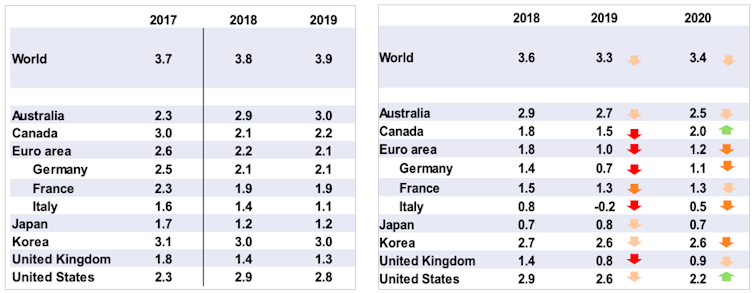









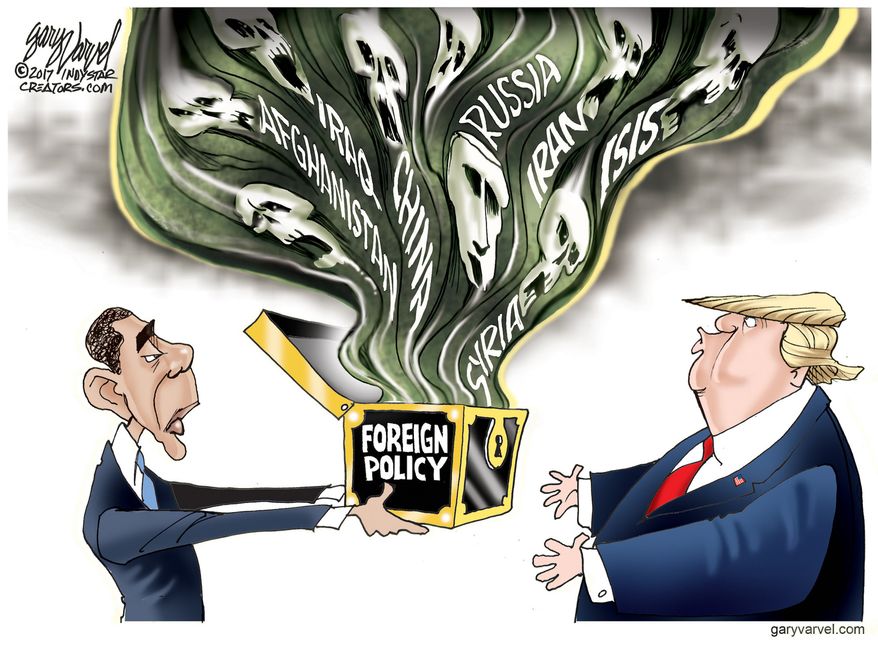

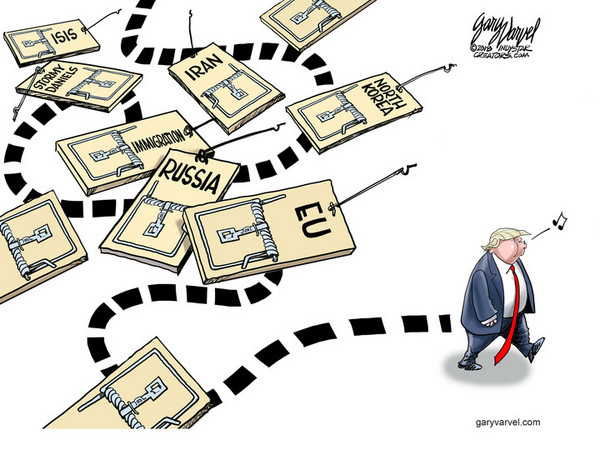
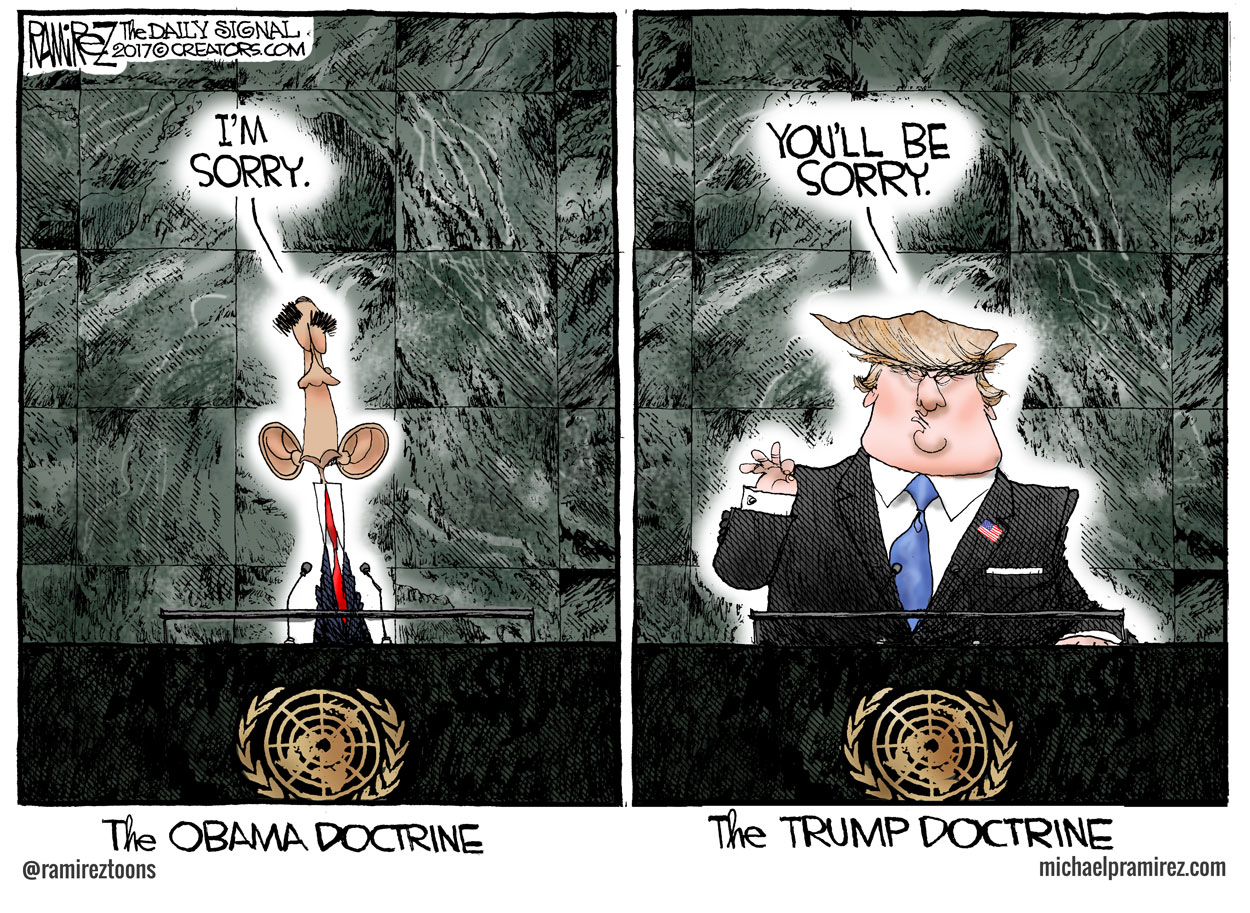








 2
2



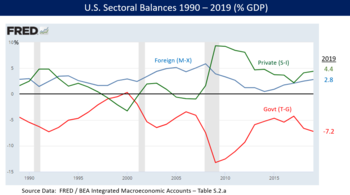




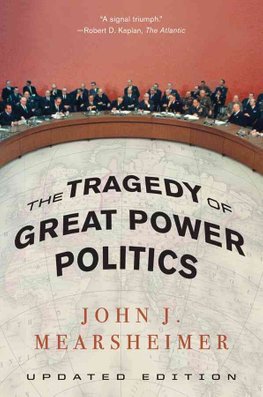






You must be logged in to post a comment.